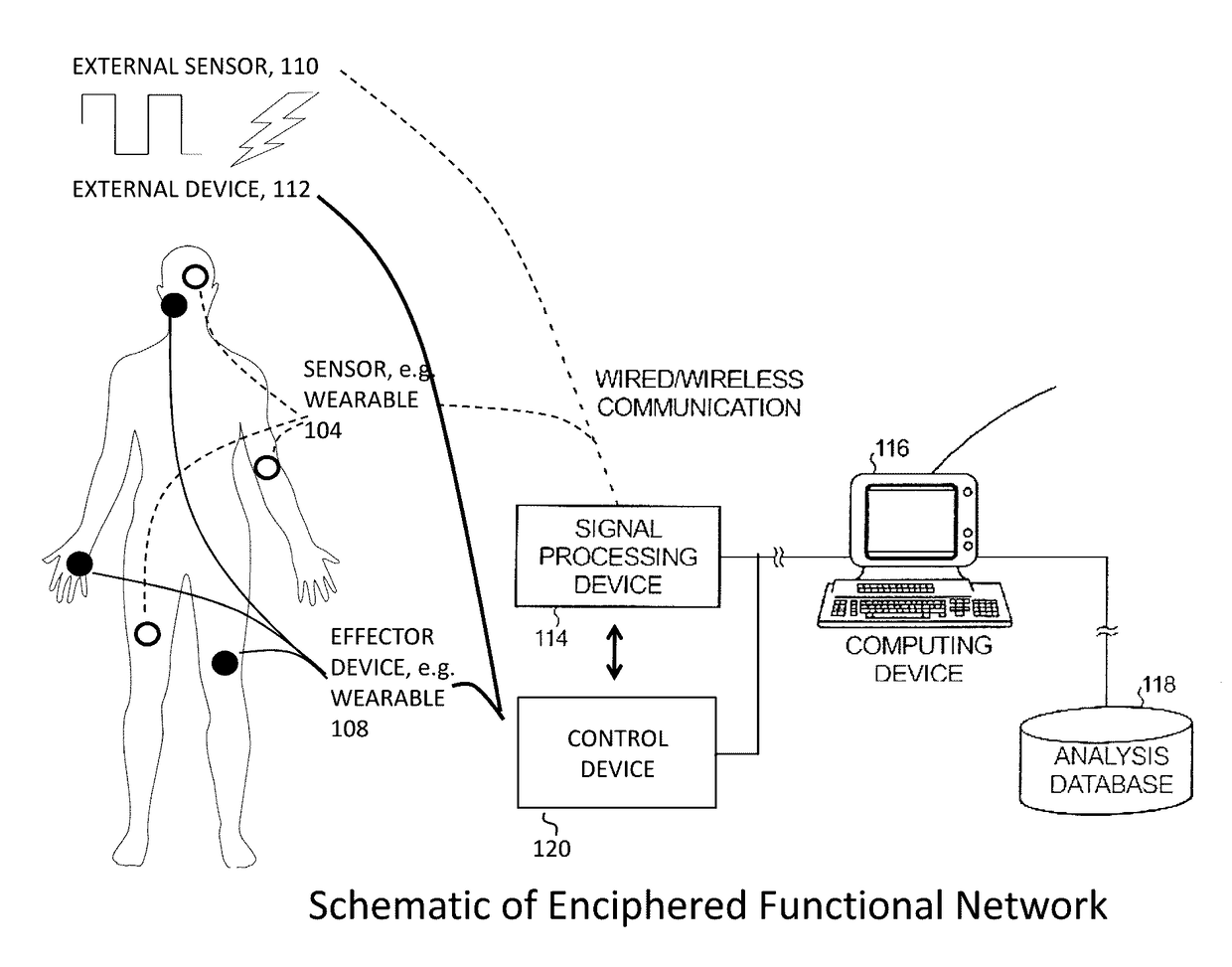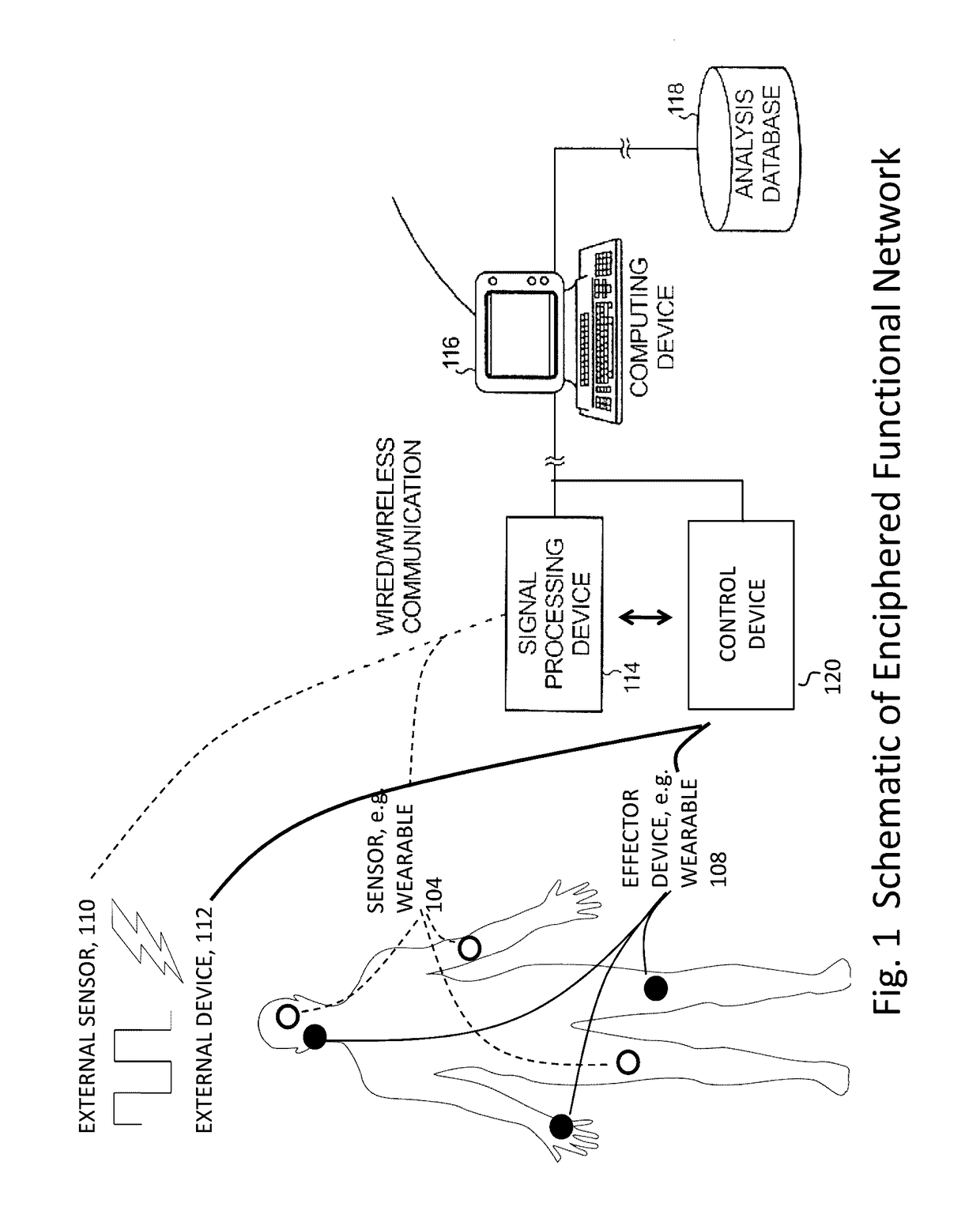Physical constraints include an external obstacle preventing movement of a limb in an enclosed space such as may affect a warrior or scuba diver.
However, functional constraints may also include underperformance on a task due to insufficient training, knowledge or acquisition of skills, or through disuse.
What is lacking is how devices can be used to automatically (“intelligently”) tailor therapy to restore lost
physiological function or enhance an existing function in a specific individual.
This inability for prior and current devices to automatically tailor therapy and restore or enhance a function is striking when examining how the
human brain senses, integrates and controls bodily functions.
Moreover, other bodily functions including “higher cortical” functions are neither well defined nor conserved.
Unfortunately, such detailed knowledge is often incomplete.
Mapping of functional locations often vary between individuals—and even in the same person at different times. Many functions are poorly mapped, such as memory,
cognition and mental performance.
Even for well mapped functions, studies that define
physiological function often raise additional uncertainties in this functionality.
Mapping functional domains of a bodily function—the network of physiological systems associated with that function including sensed signals and biological effectors that control it—is difficult.
Mapping of functional domains is particularly difficult for functions involving the brain.
However, there is an urgent need to sense and modulate functional domains whose altered function may cause
disease or suboptimal performance.
As a result, it has been difficult to treat this condition even using novel systems that activate tongue motion to reduce obstruction.
Interactions between the multiple organ systems impacted by sleep further complicate precise mapping.
An individual's ability to sleep may be compromised in many ways.
However, this is a cumbersome test typically performed with an overnight
hospital stay attended by physicians, is not well liked by patients, cannot easily be repeated to assess the
impact of therapy and is difficult to perform at home.
Recent studies have shown that commercial tests offered to circumvent traditional polysomnography are suboptimal at best.
Some recent devices have applied stimulation to the muscles of the tongue or face to eliminate obstruction, but it is unclear how well they will work in the broad
population.
Pharmacological
drug therapy is often used to induce sleep, but these agents are not useful in
sleep apnea.
These drugs rarely mimic the natural stages of sleep, rarely induce rapid
eye movement (REM) sleep that is essential for restfulness, and may paradoxically worsen sleep disorders and produce
daytime drowsiness despite nighttime
unconsciousness.
All these current modalities suffer from a significant common problem, as they attempt to perform therapy with no or minimal
sensory input, feedback, or modulation of such therapy based upon the individual patient's neurological activity.
Similar to
trigeminal nerve stimulation, the mechanism is poorly understood, the actual stimulation of the
vagus nerve is unclear via this noninvasive approach, and there is no individual patient
adaptation.
All of these approaches, even though they show interesting preliminary data suffer, from the same problems as above, namely, poor understanding of mechanism and lack of patient-tailored therapy due to a lack of feedback and
adaptation for individual patients.
.)—are being evaluated but typically do not have individual patient-tailored therapies.
In fact, whether direct management of the obstruction resolves the problem of
apnea is also unclear due to commonality of a
central sleep apnea component in most patients.
However, these therapies target single components of the physiologic network for a bodily function, and are limited because they do not consider the remaining network.
This may lead to suboptimal therapy, compensatory mechanisms that further diminish the
efficacy of therapy, or unwanted effects.
Moreover, these therapies are only as good as the accuracy of their specific targets, and brain / nerve regions are imprecisely defined for many bodily functions including
sleep control, sleep-
breathing conditions,
cognition,
alertness, memory, overall mental performance, or response to
obesity.
Unfortunately, such approaches may be limited in that normal pathways vary from individual to individual.
Thus, simulating normal often may not accurately replicate that function for an individual nor represent normal for that individual.
In other situations, the use of devices to enhance or compensate for other functions such as motor tasks are limited or constrained.
Physical constraints include an external obstacle preventing movement of a limb in an enclosed space such as may affect a warrior or scuba diver.
However, functional constraints may also include underperformance on a task due to insufficient training, knowledge or acquisition of skills, or through disuse.
However, the precise locations of the brain or other physiological systems that control each task are not well defined.
Much data has come from animal models that are not well suited to model or analyze complex human functions or mental functions.
Currently, there are few methods in the prior art to achieve these goals.
 Login to View More
Login to View More  Login to View More
Login to View More 


